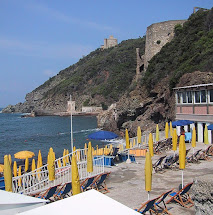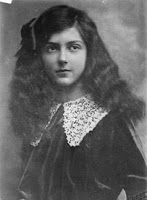NEW - Giotto Bizzarrini - auto engineer
Took part in 1961 rebellion that left Ferrari on brink
The automobile engineer Giotto Bizzarrini, a key figure in the development of Ferrari’s 1960s sports car, the 250 GTO, was born on this day in 1926 in Quercianella, a seaside village on the coast of Tuscany. Bizzarrini famously joined with two other key engineers and several more employees in quitting Ferrari in October 1961 after a colleague had been sacked by founder Enzo Ferrari following a row over Ferrari’s wife, Laura, interfering in how the company was run. Their walk-out left Ferrari effectively with no engineers to further develop on-going projects. The marque was already at a low point following the deaths of five of their main drivers in crashes between 1957 and 1961, one of which, at Monza in 1961, saw 15 spectators also lose their lives. Enzo Ferrari, who was accused of running his company like a dictator, is said to have considered winding it up after Bizzarrini and the others left. The episode is remembered in Ferrari’s history as ‘the Great Walkout’. Bizzarrini was born into a wealthy family from Livorno. His father was a landowner. Read more…
_____________________________________
Italo Balbo - Fascist commander
Blackshirt thug turned air commander was Mussolini’s ‘heir apparent’
Italo Balbo, who rose to such a position of seniority in the hierarchy of the Italian Fascists that he was considered the man most likely to succeed Benito Mussolini as leader, was born on this day in 1896 in Quartesana, a village on the outskirts of Ferrara in Emilia-Romagna. After active service in the First World War, Balbo became the leading Fascist organizer in his home region of Ferrara, leading a gang of Blackshirt thugs who became notorious for their attacks on rival political groups and for carrying out vicious reprisals against striking rural workers on behalf of wealthy landlords. Later, he was one of the leaders of the March on Rome that brought Mussolini and the Fascists to power in 1922. As Maresciallo dell'Aria - Marshal of the Air Force - he rebuilt Italy’s aerial warfare capability. At the height of his influence, however, he was sent by Mussolini to be Governor of Italian Libya. Many believed that Mussolini saw Balbo as a threat and when Balbo was killed when the plane in which he was travelling was shot down - seemingly accidentally - by Italian anti-aircraft guns over Tobruk, there were those among Balbo’s supporters who believed it was not an accident. Read more…
Camillo Benso, Count of Cavour
Prime Minister died after creating a united Italy
The first Prime Minister of Italy, Camillo Benso, Count of Cavour, died on this day in 1861 in Turin. A leading figure in the struggle for Italian unification, Cavour died at the age of 50, only three months after taking office as Prime Minister of the new Kingdom of Italy. He did not live to see Venice and Rome become part of the Italian nation. Cavour was born in 1810 in Turin, the second son of the fourth Marquess of Cavour. He was chosen to be a page to Charles Albert, King of Piedmont, when he was 14. After attending a military academy he served in the Piedmont-Sardinian army but eventually resigned his commission and went to run his family’s estate at Grinzane in the province of Cuneo instead. He then travelled extensively in Switzerland, France and England before returning to Turin where he became involved in politics. Originally he was interested in enlarging and developing Piedmont-Sardinia economically rather than creating a unified Italy. As Prime Minister he took the kingdom of Piedmont-Sardinia into the Crimean war hoping it would gain him the support of the allies for his plans for expansion. Read more…
____________________________________
Maria Theresa - the last Holy Roman Empress
Italian noblewoman was first Empress of Austria
Maria Theresa of Naples and Sicily, the last Holy Roman Empress and the first Empress of Austria, was born at the Royal Palace of Portici in Naples on this day in 1772. She was the eldest daughter of Ferdinand IV & III of Naples and Sicily (later Ferdinand I of the Two Sicilies) and his wife, Marie Caroline of Austria, through whom she was a niece of the last Queen of France, Marie Antoinette. Named after her maternal grandmother, Maria Theresa of Austria, she was the eldest of 17 children. Her father was a son of Charles III of Spain and through her father she was a niece of Maria Luisa of Spain and Charles IV of Spain. Although she had a reputation for pursuing a somewhat frivolous lifestyle, which revolved around balls, carnivals, parties and masquerades, she did have some political influence, advising her husband about the make-up of his government and encouraging him to go to war with Napoleon, whom she detested. She assumed her titles after she married her double first cousin Archduke Francis of Austria on September 15, 1790. Francis became Holy Roman Emperor at age 24 in 1792. Read more…
____________________________________
Battle of Novara 1513
Many lives lost in battle between French and Swiss on Italian soil
Swiss troops defeated a French occupying army on this day in 1513 in a bloody battle near Novara in the Piedmont region of northern Italy. The French loss forced Louis XII to withdraw from Milan and Italy and after his army were pursued all the way to Dijon by Swiss mercenaries, he had to pay them off to make them leave France. The battle was part of the War of the League of Cambrai, fought between France, the Papal States and the Republic of Venice in northern Italy, but often involving other powers in Europe. Louis XII had expelled the Sforza family from Milan and added its territory to France in 1508. Swiss mercenaries fighting for the Holy League drove the French out of Milan and installed Maximilian Sforza as Duke of Milan in December 1512. More than 20,000 French troops led by Prince Louis de la Tremoille besieged the city of Novara, which was being held by the Swiss, in June 1513. However, a much smaller Swiss relief army arrived and surprised the French just after dawn on June 6. German Landsknecht mercenaries, armed with pikes like the Swiss troops, put up some resistance to the attack. Read more…
.jpg)
%20(2).jpg)



.jpg)
_2.95.jpg)


.JPG)
.jpg)


.jpg)

.jpg)


.jpg)
.jpg)
.jpg)


.jpg)





